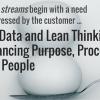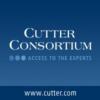Business Transformation Requires Transformational Leaders
Leadership and teaming skills are front and center in times of rapid change. Meet today’s constant disruption head on with expert guidance in leadership, business strategy, transformation, and innovation. Whether the disruption du jour is a digitally-driven upending of traditional business models, the pandemic-driven end to business as usual, or the change-driven challenge of staffing that meets your transformation plans—you’ll be prepared with cutting edge techniques and expert knowledge that enable strategic leadership.
Recently Published
This article explores a single concern: describing the system-level capabilities required to derive maximum analytic value from a generalized model of NoSQL data. A generalized model is a model that works across all data sources no matter what type of data is present. Generalized analytics can answer all questions, from simple to complex, across all data types. This approach leads to eight well-defined, objective attributes, which collectively form a precise capabilities-based definition of a NoSQL analytics system.
This article argues for an overarching framework that will not only facilitate adoption of analytics and technologies, but will also provide a solid foundation for taking a strategic approach to big data. This framework is called the Big Data Framework for Agile Business (BDFAB v1.5), and its development is based on a review of the relevant literature, experimentation, and practical application.
How do we ensure that we are getting the most from big data, cognitive computing, and whatever lies beyond, to improve the probability of making the right decisions, in the right context, and for the right reasons? We believe that lessons learned in over five decades of Lean Thinking can help guide us forward in this journey, and we will use examples from the financial services industry to illustrate them.
I think I have finally have come up with a good theory to explain why there have been so many stories of government projects in trouble recently: the inhabitants of Talos IV are managing them.
“Big data” and “analytics” are among the most overhyped and abused terms in today’s IT lexicon. Despite widespread use for almost a decade, their precise meanings remain mysterious and fluid. It is beyond doubt that the volume of data being generated and gathered has been growing exponentially and will continue to do so, intuitively validating the big moniker. However, other vital characteristics of today’s data, such as structure, transience, and — most disturbingly — meaning and value, remain highly ambiguous. Analytics also remains troublingly vague, as it is prefixed with adjectives ranging from operational to predictive.
Establishing a successful, sustainable business architecture practice is a journey that takes time, especially within large organizations. While there are always many ways to achieve an outcome, this Advisor shows a practical and well-tested path to accelerate the process of establishing and maturing a practice.
Cognitive Technologies in Banking and Finance, Part II
Part I in this two-part Executive Update series covered the use of cognitive systems in banking and finance in three application domains: (1) research and discovery; (2) business intelligence (BI), advisory, and decision support; and (3) risk assessment, compliance, and fraud prevention. This Update expands on the topic and examines the use of cognitive technologies in banking and finance for enhancing customer service and customer experience management.
[From the Editor: In 2012, Senior Consultant Lee Devin wrote about industrial thinking and methods (see "Artful and Industrial Making"). His words continue to ring true today. We share his message again here.]
















